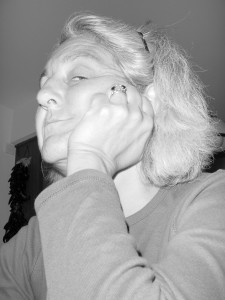Insecure Egomaniacs
 In April 2007, the New Yorker published an article by John Calapinto called The Interpreter. It describes Dan Everett, a linguistic researcher who lived for many years with a remote Amazonian tribe in Brazil, the Parahã.
In April 2007, the New Yorker published an article by John Calapinto called The Interpreter. It describes Dan Everett, a linguistic researcher who lived for many years with a remote Amazonian tribe in Brazil, the Parahã.
The Parahã consider their language to be vastly superior to all others, and show no interest in learning other languages. In fact, as far as they’re concerned, nearly anything that isn’t part of their culture is completely un-interesting – planes, movies, radio. They are entirely self-absorbed, in a very profound and fundamental way.
Meanwhile, back in the “civilized” world, the field of linguistics is dominated by the theory of Noam Chomsky, which I won’t attempt to describe except to say it posits a universal characteristic of human propensity to form language. In other words, it says all languages must have this one thing (recursion) in common.
Well, surprise, surprise. The Parahã language, according to Everett, appears to be a counter-example. All attempts at demonstrating recursion fail. Chomsky would appear to be wrong.
But the Chomsky-ites are undeterred. Something must be wrong – wrong with the data, wrong with the researchers, wrong with the methodology. Because something can’t be wrong with the theory.
And so the linguistic theorists are just like the Parahã they study: convinced of the utter un-interesting-ness of the world around them – and blissfully ignorant of the irony.
Self-Centricity
Linguistics is hardly the only example of this self-centricity. We are literally born with it; our world starts off as hardly larger than our mother’s arms. Our view of astronomy was earth-centric until very recently in terms of human development.
To this day, maps of the world tend to be centered around, surprise surprise, the country they’re sold in. China was called the Middle Kingdom. Mutual funds in the US tend to be heavily weighted toward US stocks, while those in the UK are UK-weighted – yet each describes itself as global in view.
So, we think we’re the center of the universe. Let’s call that arrogance.
But arrogance has a helpmate, who often shows up at the same time and place.
Insecurity
We all like to be liked. The need for affiliation runs deep in our species, and not just for propagation. As far back as archaeology can inform us, we have tried to present ourselves to others in the best favorable light. Women wear makeup, men strut. So it goes.
In modern society, this reaches abstract levels. Some develop neurotic obsessions about the likelihood of their newborn offspring getting into Harvard, and nearly all of us are prey to teen-age angst – they like me, they like me not, my life is over.
Truth be told, very few of us ever achieve complete escape velocity from this insecurity. We still channel our inner teen-ager with depressing regularity. The urge to measure our insides by the metric of others’ outsides is powerful.
Insecure Egomaniacs
When self-centricity meets insecurity, we get Insecure Egomaniacs. In my experience, it’s not that some people are IE’s and some not – it’s that we all are IE’s, more or less, at different times. The struggle is to be less of an IE, more often, in more situations.
When we are in our IE phase, we reciprocate like alternating current between worrying that no one notices us, and that everyone is looking at us. We think ‘dance like no one’s watching,’ but we aspire to dance so well that everyone watches. We want to be at the center of the crowd, but we sit in the back row, on the side.
It’s as hard to trust an IE as it is for an IE to trust. Both arrogance and insecurity are a form of alienation, cutting us off from another, and from others. In our IE modes, we see risk everywhere, and can’t bear the thought of intimacy or vulnerability – it would either deflate our arrogance, or frighten our insecurity. And so we rotate, iterate, prevaricate.
We are not doomed by our IE predilections, not by any means. But that’s another story.

 A long time ago, in a land far away (known as “Texas”), I once had a consulting client. They operated a chain of convenience stores, and we had been brought in to address a serious case of high store manager turnover.
A long time ago, in a land far away (known as “Texas”), I once had a consulting client. They operated a chain of convenience stores, and we had been brought in to address a serious case of high store manager turnover. It’s a temptation that lures almost all marketers and salespeople: the desire to limit and control information to consumers. It seems so obvious – lead with your best attributes, downplay your least. Yet in many cases, this impulse turns out to be quite wrong.
It’s a temptation that lures almost all marketers and salespeople: the desire to limit and control information to consumers. It seems so obvious – lead with your best attributes, downplay your least. Yet in many cases, this impulse turns out to be quite wrong. Most people usually don’t think of empathy as having much business value. In fact, you might think if you start empathizing with your clients,
Most people usually don’t think of empathy as having much business value. In fact, you might think if you start empathizing with your clients,